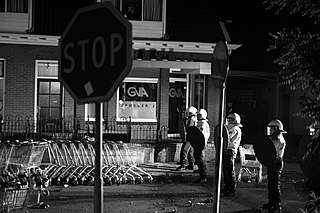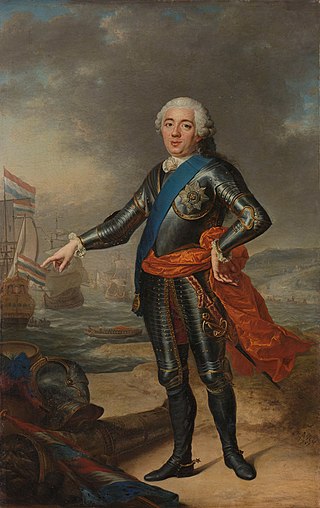Amsterdam
In Amsterdam riots fully broke out on Monday June 24 at the Botermarkt. Pavements were broken up and stones were thrown. People ran through the houses of the taxmen, breaking open and looting everything, and throwing crates of money and expensive porcelain from the bridges into the water. 36 houses in total were looted, and three people were killed and wounded.
The riots lasted until Tuesday evening. On Wednesday morning all pacht taxes were suspended for a period of six months. On Friday, June 28, two men and one woman would be hanged from the window of the Waag on the Dam. The onlooking crowd began to move in to be able to watch better, or possibly to try to free the convicted. Suddenly shooting was heard from the direction of Kalverstraat, and panic broke out. Many people were looking for shelter and jumped into the water from the Damrak. Contemporary local chronicler Braatbard suspected around two hundred men either got trampled or drowned.

Groningen is the capital town of the Saramacca District, Suriname.

Adriaan Valckenier was Governor-General of the Dutch East Indies from 1737 to 1741. Mainly remembered for his involvement in the 1740 Batavia massacre, Valckenier later died in a prison in Batavia.

The Admiralty of Amsterdam was the largest of the five Dutch admiralties at the time of the Dutch Republic. The administration of the various admiralties was strongly influenced by provincial interests. The territory for which Amsterdam was responsible was limited to the city itself, the Gooi region, the islands of Texel, Vlieland and Terschelling, the province of Utrecht and the Gelderland quarters of Arnhem and of the Graafschap (county) of Zutphen. Amsterdam had developed into the most important of all the admiralties and often compensated for the other admiralties' deficiencies. When the "Committee for Naval Affairs" replaced the Admiralty Colleges on 27 February 1795 during the reforms by the Batavian Republic, the lower civil servants were kept on, but the officers were dismissed.

Hendrik Gravé was a Dutch admiral.

The 1740 Batavia massacre was a massacre and pogrom in which European soldiers of the Dutch East India Company and Javanese collaborators killed ethnic Chinese residents of the port city of Batavia in the Dutch East Indies. The violence in the city lasted from 9 October 1740, until 22 October, with minor skirmishes outside the walls continuing late into November that year. Historians have estimated that at least 10,000 ethnic Chinese were massacred; just 600 to 3,000 are believed to have survived.
Marretje Arents, known as Mat van den Nieuwendijk, and het limoenwijf, was a Dutch fishwife and rebellion leader, sentenced to death as one of the three instigators and leaders responsible for the so-called Pachter riots of 1748.
Discrimination against people of Chinese descent in Indonesia has been carried out since the time of the Dutch East India Company. Serious violence against Chinese people has occurred at irregular intervals since 1740, when the soldiers of the Dutch East India Company and other ethnic groups from Batavia killed up to 10,000 people of Chinese descent during the Chinezenmoord. The worst outbreaks took place in 1946-49 during the Indonesian National Revolution against Dutch rule. There were significant outbreaks in the early 1960s. Violence against Chinese also took place in 1965 after the failed coup attempt during anti-communist purges; the main target of the killings were Native Indonesian communists. In May of 1998, many Chinese businesses were burned down and many Chinese girls and women were brutally raped and murdered.

1001 Vrouwen uit de Nederlandse geschiedenis is a compilation of 1001 biographies of famous women of the Netherlands spanning roughly 1700 years.
On 1 July 2008, a riot broke out in Ulaanbaatar, the Mongolian capital city. The riot was sparked by allegations of fraud surrounding the 2008 legislative election which occurred three days earlier. While initially a peaceful protest, the riot resulted in Mongolia's first state of emergency which lasted four days, and a military presence was brought into the city to quell the riot. Five people were killed by the police, and the headquarters of the Mongolian People's Revolutionary Party was set on fire. Additional suggested causes for the riot include a change to the electoral system which was not well understood, and an increased division between Mongolia's rich and poor population.

Project X Haren was an event that started out as a public invitation to a birthday party by a girl on Facebook, but ended up as a gathering of thousands of youths causing riots on 21 September 2012 in the town of Haren, Groningen, Netherlands.

The siege of Groningen was a two-month siege which commenced on 19 May 1594, and which took place during the Eighty Years' War and the Anglo-Spanish War. The Spanish-held city of Groningen was besieged by a Dutch and English army led by Prince Maurice of Orange. The Spanish surrendered the city on 22 July, after a failed relief attempt by the Count of Fuentes.
The 1999 Rotterdam riots refers to serious riots and clashes between Dutch security forces and football hooligans in Rotterdam, the Netherlands on 26 April 1999.

Squatting in the Netherlands is the occupation of unused or derelict buildings or land without the permission of the owner. The modern squatters movement began in the 1960s in the Netherlands. By the 1980s, it had become a powerful anarchist social movement which regularly came into conflict with the state, particularly in Amsterdam with the Vondelstraat and coronation riots.

Johannes Alexander "Hans" Vijlbrief is a Dutch civil servant, economist, and politician, who currently serves as State Secretary for the Extractive Industries. He is a member of the social-liberal party Democrats 66 (D66).
The institution of the pacht or pacht-stelsel was a system of tax farming in the Dutch Republic. In this system tax is not collected by the government, but by a private individual who has leased the right to collect the tax. In the Dutch Republic, for example, this was common practise for a long time, especially for indirect taxes. Each year, the highest bidder acquired the right to collect certain taxes; he paid a rent for this to the government, and all he collected more was for the tax tenant himself. The rationale behind this system was that by outsourcing taxation, local governments could exert less influence on collection. Also, a tenant would collect taxes more scrupulously, because it would personally benefit him.

The 2021 Dutch curfew riots were a series of riots in the Netherlands that initiated as protests against the government's COVID-19 prevention measures and specifically the 21:00–4:30 curfew that was introduced on 23 January 2021. The police have described the riots as the worst in the country since the 1980 coronation riots.

The Doelisten were an orangist civic movement in Amsterdam, named after its primary meeting location the Kloveniersdoelen, which opposed the power of the Amsterdam mayors in the summer of 1748.

Protests against COVID-19 in the Netherlands were a series of protests and riots in the Netherlands against the government COVID-19 prevention measures, which were in force between 27 January 2020 and 20 May 2022, with travel restrictions lifted on 17 September 2022. The protests came to a head with the 2021 Dutch curfew riots in response to a nationwide night-time curfew between 23 January and 28 April 2021. Since the end of the COVID-19 pandemic in the Netherlands, a number of anti-lockdown protest groups and individual protesters have shifted their attention to the ongoing, largely concurrent Dutch farmers' protests against government legislation to limit agricultural pollution by downsizing livestock production.

Visvliet is a village in the Dutch province of Groningen. It is part of the municipality of Westerkwartier, and is located near the river Lauwers, the border between Friesland and Groningen.

The Orangist revolution of 1747 brought William IV, Prince of Orange to the Stadtholder office, finishing the Second Stadtholderless Period.
















